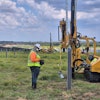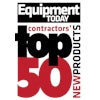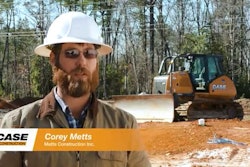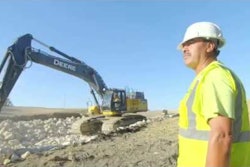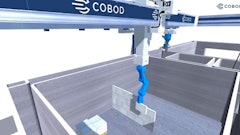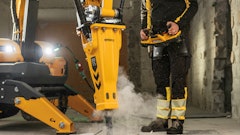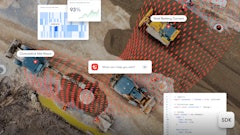
Robert Kipp, general superintendent for Satterfield & Pontikes Construction, believes mobile technologies drive construction efficiency.
He uses PlanGrid – a mobile collaboration and digital drawing management system – to keep digital drawings of the project updated in real time, as well as scans of permits, ASI/DI tracking, quality control documentation, logistics, and more.
Before construction, Kipp served in the army, and grew accustomed to the value of real-time information at his fingertips. “In construction, decisions are based on historical norms,” says Kipp. “I know the way we have done it for decades will work. If I introduce a new technology, I am introducing an unknown and therefore a risk. Why would I want to create more risk without a bona fide reward?”
Putting your convictions to the test
Traditional processes can lead to a lot of rework. “For example, if a drawing gets changed by the architect, then it’s issued, that drawing gets sent to a printer so the super[intendent] can have a copy usually the next day,” says Kipp. “Maybe the drawing is issued on Thursday but the project manager is off that day – a Friday and the following Monday. Then it gets sent to the print shop Tuesday but it doesn’t make it out to the field until Wednesday. Meanwhile, the field team has been working double shifts and Saturday on something that changed four days ago.” Therefore, having a digital drawing management system that can be shared with all parties in real time eliminates a lot of unnecessary work.
 Shown is a request for information (RFI) with comments for a construction project that uses PlanGrid. PlanGrid is a mobile collaboration and digital drawing management system that shares real-time information between contractors working on a construction project. The software is being used by all the contractors and subcontractors working on the Hudson Yards project in New York.
Shown is a request for information (RFI) with comments for a construction project that uses PlanGrid. PlanGrid is a mobile collaboration and digital drawing management system that shares real-time information between contractors working on a construction project. The software is being used by all the contractors and subcontractors working on the Hudson Yards project in New York.
Then Kipp discovered PlanGrid and used it for the first time in 2013 on Wyandach Rising – a $500 million downtown public-private redevelopment project that includes construction of two mixed-use buildings. He appreciated how much easier it made his job. “It was awesome; it was a game changer. iPad use among field crew grew organically, and the company rolled out the practice across all the company’s projects.”
Using PlanGrid gave Kipp real-time information regarding changes to drawings, as well as other important project information, such as logistics information and permits. Having this information at his fingertips saved him a lot of trips to the trailer, where this type of information is kept, usually in print. “Digital permits could be emailed to inspectors before they even come on site, meaning they don’t even have to come on site.” PlanGrid worked well on the Wyandach Rising project; and Kipp wanted to test its capabilities in a really large project. He found that opportunity with the Hudson Yards project – the largest privately funded construction project in U.S. history.
The biggest challenge lays ahead
“When I started working on the Hudson Yards project, there was some technology use, but it wasn’t standardized, and people weren’t sure how to use it. On the retail mall portion of the project, for which I was responsible, people began to see how having access to up-to-date information at their work station was simplifying their lives. Adoption grew because it was field-driven – not office-driven.”
Eventually, the property owners (Related Companies and Oxford Properties) saw that the information collected by PlanGrid during the construction process could be useful to the long-term management of that property, and mandated that everyone working on the project use it.
“We adopted PlanGrid as soon as we realized it could be used as a portable office that carries every piece of information required – for any project anywhere, any size, to any degree of difficulty,” said Eduard Kochoumian, president of KSW Mechanical, a subcontractor owned by Related Companies. “As we kept using it, we realized the potential to not only have all the information available at a push of a button, but that we could also use it to track progress for each individual discipline in construction. We can now track each trade’s performance and follow up on the deficiency's remedial progress; not to mention the available reporting capabilities of PlanGrid. I personally find it one of the best tools developed for a project manager to allow him [or her] to process, perform, track and report most of the tasks in the construction industry.”
A surprise benefit
Part way through the Hudson Yards construction project, the property owners changed the general contractor. “Changing general contractors part way through a project could be catastrophic,” says John Donahue, regional VP of field operations for PlanGrid. “How do you migrate all that information from one company to another? With PlanGrid, all that information was transferred to the next company in just a few hours, so the work with the subcontractors could continue and progress wasn’t impacted. This transition saved millions of dollars.”
